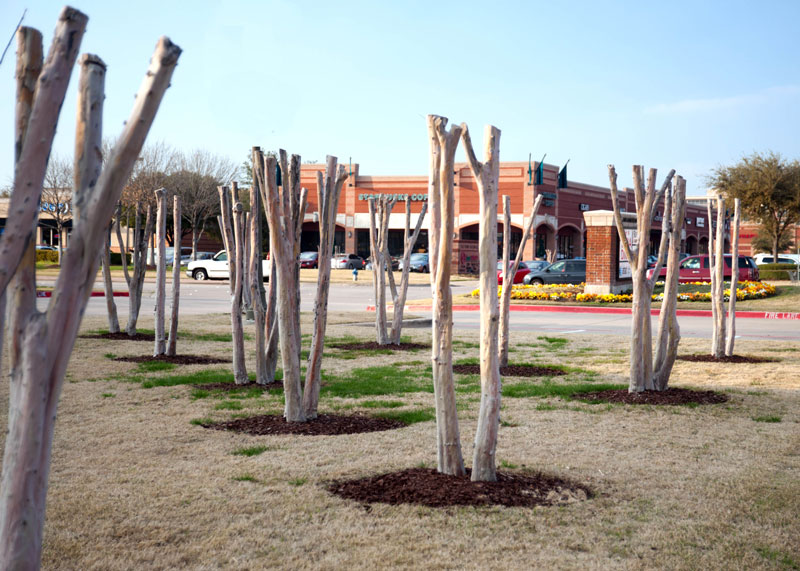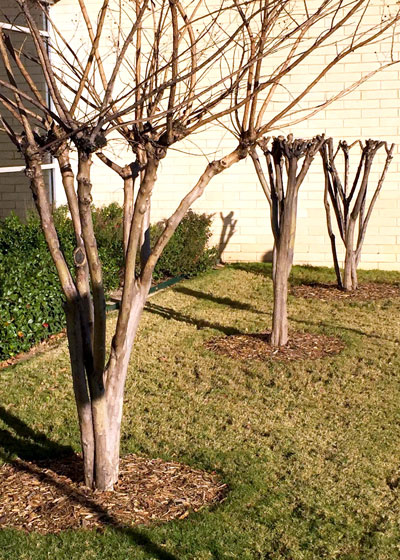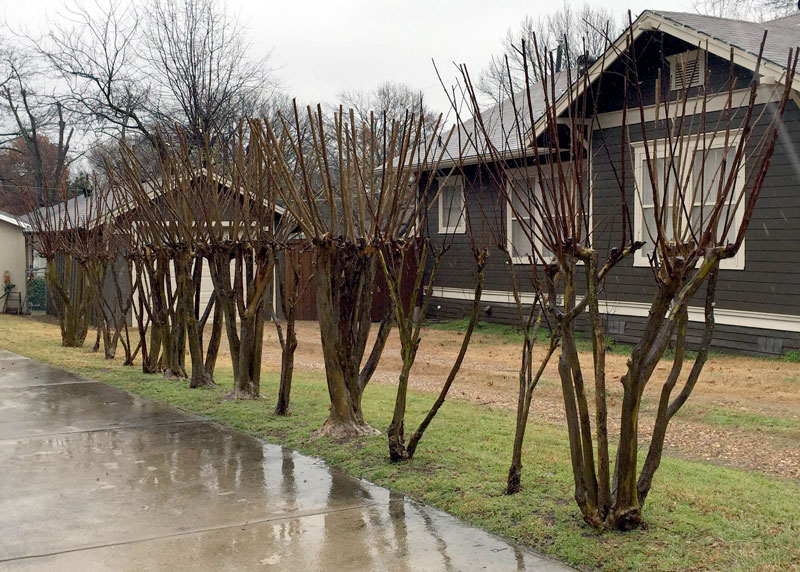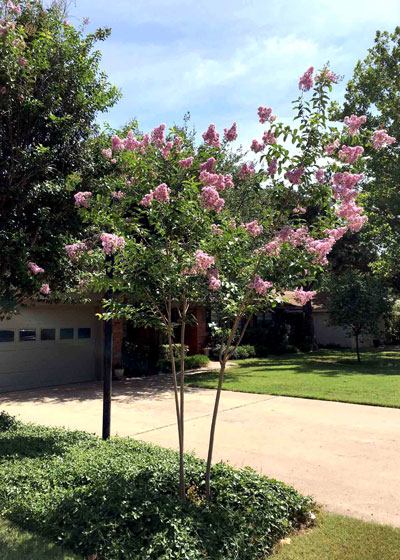Please don’t whack ‘em, Texas!

I’d like to have served on the committee that first came up with the brainstorm of cutting the living daylights out of an otherwise beautiful crape myrtle. Perhaps if someone had only spoken up to say what an idiotic idea it was, it could have been shut down before it reached epidemic proportions.
I’ve spent my entire 55-year professional career trying to talk Texans out of this barbaric habit.

There is simply no reason ever EVER to top a crape myrtle.
Let me list the arguments people have thrown up in my face over those years. Then I’ll give you the horticulturally based facts that refute every one of them.
1. The argument:
My crape myrtle was growing too tall or too wide for the space I had available for it. I had to prune it to make it fit.
The fact:
Size is a genetic thing. Pruning it won’t do one thing to change its mature size. It will still grow right back. Except now it’s going to have ugly, crooked trunks.
The solution:
If you have a crape myrtle that’s too large for its surroundings, either move it (to a new location with more room for it to grow to mature size) or remove it entirely. If you really want a crape myrtle there, you can find exactly the mature size that you want – anything between 2 and 32 ft, in height at maturity.

2. The argument:
Topping my crape myrtle makes it bloom better.
The fact:
This is an easy one to prove. Grow the same variety under the same conditions. Top one of them and do not top the other.
Topped crape myrtles’ first bloom of the summer will be delayed by 6 to 8 weeks – almost two months!
By comparison, the plant that has never been topped will probably already have bloomed two times by then.
You will get 3 or even 4 rounds of blooms from plants that have not been topped. You may only get one round from topped plants.
Additionally, flower heads on topped crape myrtles are generally huge – sometimes the size of watermelons – and heavy. They pull their long, supple stems down. That destroys the natural grace of the plant while it’s flowering. Super-unsightly. Ultimately ugly.

3. The argument:
I need to remove the seed heads after each bloom cycle (and in the winter).
The fact:
Having immature (green) or mature (brown) fruit at the ends of crape myrtle twigs does nothing to slow production of the next round of flowers. If you apply a high-nitrogen, lawn-type fertilizer as one round of blooms starts to drop, that will promote new stem growth to begin right around the developing fruit. The plants will be right back in bloom 3 or 4 weeks later until fall’s cool weather shuts them down.
As for the dried fruit in winter, they’re part of the winter character of the plant. Birds peck around at the seeds. Most importantly, there’s always a small amount of dieback of the twigs in the spring. Those dried capsules and the twigs that support them will fall to the ground by May.
You don’t need to waste precious time trimming them off in the winter. I suspect that’s where topping got started – some guy got tired of cutting branch by branch and figured he could cut one huge branch and do it all at once.
Well, stop doing that!
How you can help spread this message…
You have a louder voice than you think. Here are ways you can help spread the true facts.
• Print out this story. Post a link to it in your social media.
• If you’re in a garden club or other civic organization that cares about your community, make a quick announcement.
• Send the information to your city officials – the mayor, the city manager, the parks and rec. department: whoever is in charge of caring for landscapes.
• Let retailers know to ask their landscapers not to practice this silliness. Many landscapers use topping as a way to keep their crews busy right after the holidays. There are plenty of other better projects.
What do you do if you have a plant that’s already been butchered?
Of course, you could replace it with a young and healthy plant, then take care to train it correctly.

But for most of us there’s a less expensive, equally quick, and easier way. Hang onto your bloomers. It’s going to surprise you.
• Cut the topped plant back completely to the ground.
• It will send up several dozen new shoots. Leave all of them for 3 or 4 months. By mid-summer remove all but 7-9 shoots per plant. (Even though your goal will probably be to have three main trunks, you want to leave a few extras because they are quite brittle and can break off very easily.)
• As they turn woody late in the first season, narrow your choices of new trunks down to the 5 straightest, strongest stems. Remove all the rest flush with the stump.
• The second spring further thin down to the final 3 trunks. You may want to put a 1×1 wooden stake directly alongside each trunk as protection from breakout. Secure each with elastic plant tie and leave them in place for that second year.
• You’ll be amazed at how rapidly you’ll have a handsome, reformatted tree-form crape myrtle. Usually, it will be very attractive by the end of the second year and almost mature looking during its third summer. Trying to retrain a topped plant simply by reshaping and pruning around the gnarly stems would take decades and the plant still would show scars.
